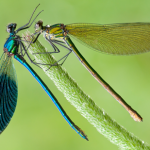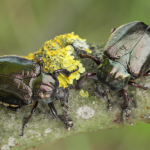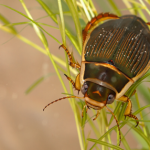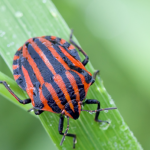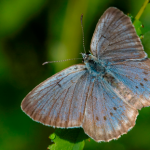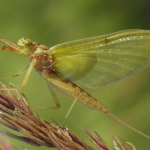 Foto: Paweł Niemiec
Foto: Paweł Niemiec
Great diving beetle (Dytiscus marginalis)
This large insect with a massive body belongs to the family of water beetles. It is one of the best swimmers of all invertebrates. It lives in both small puddles, ponds and large lakes or rivers. I has perfectly adapted to life in the water. It has a perfectly streamlined body and rear legs acting as paddles. In addition, the whole body is covered with an oily secretion to repel water. The great diving beetle breathes atmospheric air that it accumulates under the wing covers. From time to time it flows to the surface of the water to replenish it. The accumulated air makes the insect lighter than water. To stay under the water surface for a longer time, it grabs underwater vegetation. The Latin name of the insect perfectly reflects its appearance. It has olive-brown coloration with a distinctive yellow border around the edges of the body. In males the wing covers are shiny and smooth, while in females they have distinct furrows. The great diving beetle can fly, so it gradually settles in new water bodies. Using powerful mandibles it preys on animals much larger than itself. Both larvae and adult insects eat fish fry, causing significant losses in the pond.




